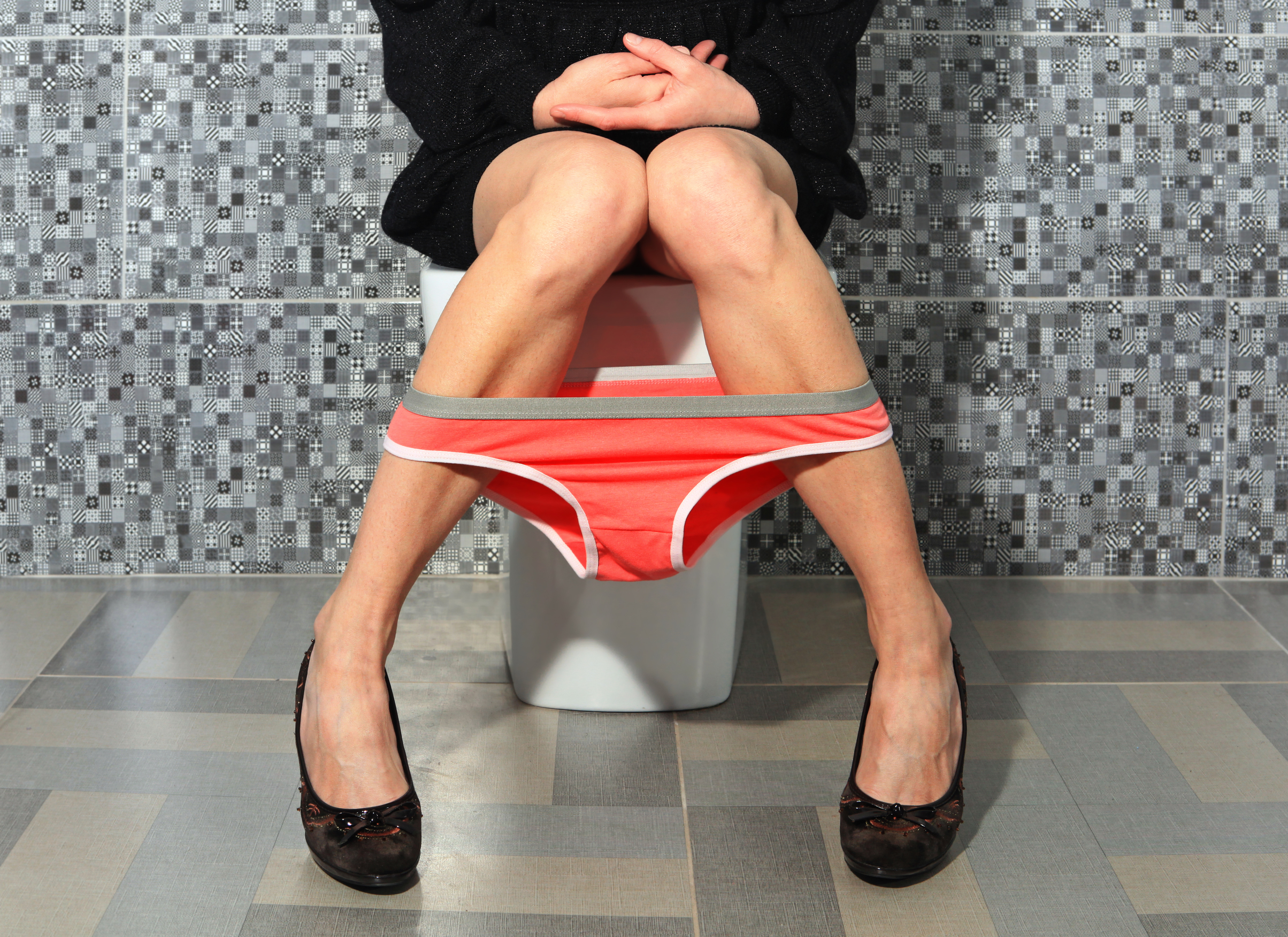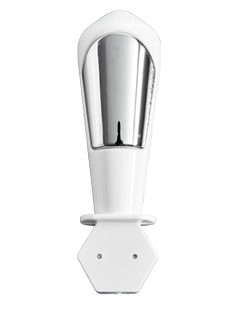
Urinary incontinence is a subject most people don't talk about very much. For the estimated 50-84% of middle age and older individuals it affects, it occupies an unfortunately large portion of their thoughts. Urine leakage can happen in response to everyday activities such as laughing or sneezing. Sometimes, it can happen without any discernable trigger at all.
Urinary incontinence is more than a minor inconvenience for individuals who have it. Activities are limited, and clothing is often carefully chosen to hide bulky incontinence pads or briefs. Even though incontinence products are convenient, management of this condition is far from it. Schedule bathroom breaks and unexpected trips to the restroom can add up to lots of missed moments with the family or reduced productivity at work.
Since urinary incontinence is twice as common in women as it is in men, we've committed ourselves to understanding and treating this challenging condition. We've researched this condition and provide education to our customers. We're also familiar with several treatment options. So, stop searching the internet for female urinary incontinence treatment near me. Beautox Bar is pleased to offer the latest in female urinary incontinence treatment as well as other women’s wellness and health services.
Urinary incontinence can be temporary or persistent. Temporary urinary incontinence might not be something everyone has experienced, but everyone has experienced increased urinary urgency and frequency from consuming certain foods or drinks. In fact, our customers who have urinary incontinence report having worse symptoms from consuming foods such as chili peppers, chocolate, and artificial sweeteners. Alcohol and caffeine-containing beverages such as coffee or tea are also diuretics.
Certain medical conditions can also cause temporary urinary incontinence. One of the most common causes of temporary urinary incontinence is a urinary tract infection. These infections can cause a lot of irritation in the bladder, leading to increased urgency and incontinence. While we offer don't associate constipation with the bladder, excess stool in the rectum can place additional stress on the nerves that control urination. This can make the bladder overactive and possibly incontinent.
Persistent urinary incontinence doesn't disappear with a change in diet or treatment for a urinary tract infection or constipation. It is a long-term condition with underlying health issues or body changes. Pregnancy and childbirth are two frequent causes of urinary incontinence. The rollercoaster ride-like hormonal swings associated with and additional weight of a baby on board can cause stress incontinence for several months.
Once the baby is born, having a vaginal delivery can also damage underlying supportive tissue, bladder nerves, and muscles used for controlling the bladder. Sometimes, a new mother may have a pelvic floor prolapse. When this occurs, the uterus, intestines, or bladder can protrude into the vagina and cause incontinence to occur.
Menopause is another hormonal upheaval that can cause incontinence in women. Declining estrogen levels can lead to issues with the urethra and bladder. Age-related changes besides menopause can also make incontinence worse. Since the bladder muscle decreases with age, the bladder isn't as efficient at storing urine. Involuntary bladder contractions that can cause incontinence also become more frequent in some individuals.
Although we treat urinary incontinence, every urinary stress incontinence treatment should begin with a thorough examination by a healthcare provider. This is to rule out any serious medical conditions such as a tumor or a neurological disorder. Urinary stones or tumors can block urine flow anywhere along the urinary tract and cause unexpected leakage. Neurological conditions such as a spinal cord injury, stroke, Parkinson's Disease, and Multiple Sclerosis can alter nerve function and cause urinary incontinence.
Regardless of its cause, the symptoms of urinary incontinence can interrupt life. Most people experience a little dribbling or leaking of urine. Sometimes, individuals lose more urine or lose it more frequently. Different types of urinary incontinence can cause a range of symptoms. Although we treat stress incontinence, knowing a little about the other types of incontinence can help our customers seek other treatment options when they need them.
Stress incontinence is one of the most common types of incontinence. It is also the form we focus on treating at Beautox Bar. In this form of incontinence, urine leaks in response to the additional pressure created during sneezing, laughing, exercising, coughing, or lifting heavy objects.
Overflow incontinence arises when the bladder doesn't completely empty. Since it holds excess urine, the bladder constantly or frequently leaks small amounts of urine.
Urge incontinence happens when an individual feels a strong urge to urinary and then unintentionally leaks some urine. Persons with this form of incontinence typically make multiple trips to the bathroom in the middle of the night as a result of this condition. Individuals living with diabetes, neurological issues, or other chronic conditions often have urge incontinence.
Functional incontinence means that an individual is incontinent because they have another physical or mental issue that makes it difficult for them to get to the toilet on time. An example of this is a person with severe arthritis who is unable to get undressed quickly enough to avoid an incontinence episode.
Persons with mixed incontinence have a few forms of incontinence occurring at the same time. Stress incontinence and urge incontinence are the two most frequently occurring forms of incontinence for those with mixed incontinence.


At Beautox Bar, we offer FormaV and VTone therapies for female incontinence treatment. These non-surgical treatments are both quickly administered using a vaginal wand. Depending on the treatment, the labia, vagina, or pelvic floor muscles may be targeted.
FormaV involves applying deep heat to increase blood circulation, relax muscles, and relieve pain in the labia, vagina, and other tissues needed for healthy urinary function. Heating levels can be modified for individualized collagen restoration and tissue remodeling.
VTone can be used to retrain the portion of the neuromuscular system responsible for urination. This treatment applies FDA-cleared electrical muscle stimulation (EMS) to the pelvic region to tone the muscles and nerves responsible for controlling the flow of urine.
An internet search for urinary stress incontinence treatment near me showcases a wide range of behavioral, physical, and medical treatment options for urinary incontinence. While some of these approaches may be right for some of our customers, we can only speak about those we offer in comparison to other options that are available.
Many people manage stress incontinence with absorbent pads or briefs. These are convenient but can develop an odor if not changed frequently. Some other individuals rely on catheters. Some patients continually wear a catheter with a plastic catheter bag attached to their leg to collect urine. Others periodically insert a catheter to remove urine from their bladder on a set schedule. Both of these catheter options can be messy and require a high degree of medical skill.
Behavioral strategies are another common method of managing stress incontinence. Such techniques include bladder training, scheduled bathroom trips, and avoiding certain foods or beverages. Kegel exercises are a form of physical training in which an individual focuses on tightening and releasing the muscles that control the flow of urine. The problem with Kegel exercises is that one must do them correctly each time and remember to do them multiple times per day. As a result, many individuals are anxious to find Kegel alternatives.
Medications such as topical estrogens and anticholinergic drugs are also sometimes prescribed for stress incontinence. These have side effects and aren't right for everyone. In the medical realm, there are also numerous surgical procedures for urinary incontinence. One of the most common is the sling procedure. This surgery involves building a sling out of synthetic mesh to keep the urethra closed.
Non-surgical incontinence treatment options at Beautox Bar are designed to give women with mild to moderate urinary stress incontinence an alternative to risky surgeries. Our treatments are also viable alternatives to incontinence briefs, behavioral interventions, and medications.
While radiofrequency and electrical muscle stimulation are excellent choices for many of our customers, they might not be suitable for everyone. We ask that our customers get routine healthcare and screening for any underlying issues involved in stress incontinence. Once any such issues have been identified and have been medically cleared, our customers are able to enjoy the benefits of our treatment options thoroughly.
Beautox Bar LLC offers treatment packages and Female Sexual Dysfunction Treatment Options.
V Tone 6 Pack - $1500 or $275 for a single (maintenance) treatment.
Forma V 3 Pack - $3000 or $1200 for a single (maintenance) treatment.
Morpheus8v 3 Pack - $3000 or $1200 for a single (maintenance) treatment.
The best part of getting treated at Beautox Bar is the minimal downtime involved. Unlike surgery or other procedures, customers at our medispa can expect to return to many of their daily activities on the same day as the procedure. Customers receiving FormaV and/ or Vtone need to avoid sexual intercourse and soaking in a hot bath or hot rub for 48 to 72 hours.
Beautox Bar LLC offers treatment packages and Mommy Make Over Options.
V Tone 6 Pack- $1500 or $275 for a single (maintenance) treatment
Forma V 3 Pack - $3000 or $1200 for a single (maintenance) treatment
If you've learned anything from our overview of stress urinary incontinence, we hope you know there is no need for anyone to feel shame about it. Urinary incontinence is a common issue that will affect most of us during our lifetimes. It is also treatable. We hope that you'll give us a call at (763) 205-6952 to discuss your options for non-surgical urinary stress incontinence treatment today.
We are proud to offer the following Medspa and Women's Wellness and Health Treatments, including:
Female Urinary Incontinence Treatment
Female Sexual Dysfunction Treatment
Non-Surgical Vaginal Rejuvenation Treatment
FormaV
CO2Lift Carboxy Therapy
Face Tightening
Body Sculpting
Microneedling
Liposuction Alternatives
AREAS SERVED:
Plymouth
Maple Grove
Brooklyn Park
Minnetonka
Champlin
Coon Rapids
Rogers
St. Michael
Albertville
Otsego
